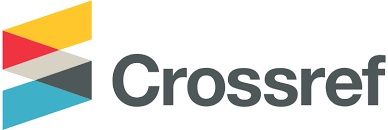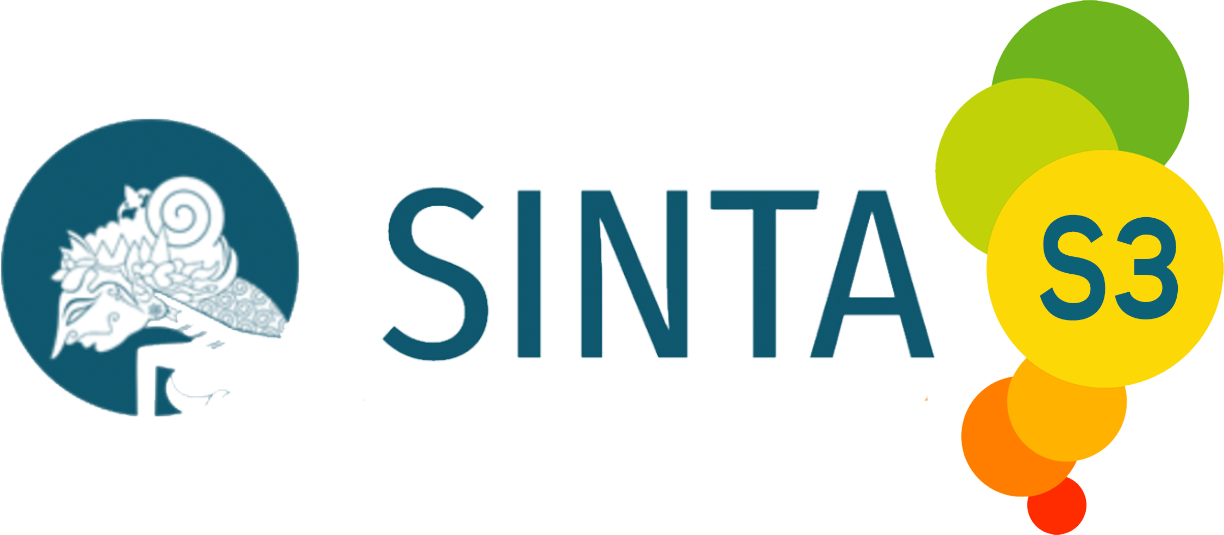Beef Salt-Soluble Proteins and Seaweed (Eucheuma cottonii) Flour Interactions to the Quality of Heat-Induced Gel Matrix Development
DOI:
https://doi.org/10.21776/ub.jitek.2020.015.02.1Keywords:
Binder, Eucheuma cottonii, gelatinization, gel strength, myofibrillar proteinAbstract
The objective of this study was to observe the interactions between salt-soluble proteins from beef and seaweed (Eucheuma cottonii) flour and its effect to the quality of the produced protein gel. The study was conducted as experimental research with two factorials completely randomized design. The effect of different NaCl (2.0%; 2.5%; 3.0%; and 3.5%) and Eucheuma cottonii flour (5%; 10%; and 15%) concentrations was observed to the physical and proximate quality of the protein gel matrix. The observed gel quality variables include pH, gel strength, color (L, a*, and b*), moisture, protein, and fat content. The gel was gelatinized at 90°C for 20 min and cooled down at 4°C for 12 h. The results showed that there was no interaction effect found on all of observed variables. However, a highly significant effect (P<0.01) was found on the ash content with different salt concentrations, while different Eucheuma cottonii flour concentrations improved the gel strength (P<0.01) and significantly gave darker (P<0.01) color. The effect of Eucheuma cottonii flour on the physicochemical properties of the gel was concentration dependent. Therefore, this study concludes that Eucheuma cottonii flour showed a potential as binding or filling agent to form strong gel matrix in processed meat products.References
Abdolghafour, B., & Saghir, A. (2014). Development in sausage production and practices-A review Sausage Production : Ingredients and Raw. Journal of Meat Science and Technology, 2(3), 40–50.
AOAC. (2005). Official Methods of Analysis (18th ed.). AOAC International.
Campo, V. L., Kawano, D. F., Silva, D. B. da, & Carvalho, I. (2009). Carrageenans: Biological properties, chemical modifications and structural analysis – A review. Carbohydrate Polymers, 77(2), 167–180. https://doi.org/10.1016/j.carbpol.2009.01.020
Choi, Y.-S., Park, K.-S., Kim, H.-Y., Kim, H.-W., Song, D.-H., Chung, H.-J., Lee, J.-W., & Kim, C.-J. (2011). Interactions between chicken salt-soluble meat proteins and makgeolli lees fiber in heat-induced gels. Korean Journal for Food Science of Animal Resources, 31(6), 817–826. https://doi.org/10.5851/kosfa.2011.31.6.817
Eady, M., Samuel, D., & Bowker, B. (2014). Effect of pH and postmortem aging on protein extraction from broiler breast muscle. Poultry Science, 93(7), 1825–1833. https://doi.org/10.3382/ps.2013 -03619
Erjanan, S., Dotulong, V., & Montolalu, R. I. (2017). Mutu karaginan dan kekuataan gel dari rumput laut merah Kappaphycus alvarezii. Media Teknologi Hasil Perikanan, 5(2), 36–39. https://doi.org/10.35800/mthp.5.2 .2017.14872
Huang, M., & Yang, H. (2019). Eucheuma powder as a partial flour replacement and its effect on the properties of sponge cake. LWT, 110, 262–268. https://doi.org/10.1016/j.lwt.2019.04.087
Keever, B. (2012). Salt Concentration and Species Affects Protein Extractability and Processed Meat Characteristics. University of Illinois at Urbana-Champaign.
Kurniawan, A., Al-Baarri, A., & Kusrahayu. (2012). Kadar serat kasar, daya ikat air, dan rendemen bakso ayam dengan penambahan keraginan. Aplikasi Teknologi Pangan, 1(2), 23–27.
Lam, R. S. H., & Nickerson, M. T. (2013). Food proteins: A review on their emulsifying properties using a structure–function approach. Food Chemistry, 141(2), 975–984. https://doi.org/10.1016/j.foodchem.2013.04.038
MacArtain, P., Gill, C. I. R., Brooks, M., Campbell, R., & Rowland, I. R. (2007). Nutritional value of edible seaweeds. Nutrition Reviews, 65(12), 535–543. https://doi.org/10.1301/nr.2007.dec.535-543
Purnomo, H. (2012). Teknologi pengolahan dan pengawetan daging. UB Press.
Rahardiyan, D. (2004). Bakso (Traditional Indonesian Meatballs) Properties with Postmortem Condition and Frozen Storage. Louisiana State University.
Schmiele, M., Nucci Mascarenhas, M. C. C., da Silva Barretto, A. C., & Rodrigues Pollonio, M. A. (2015). Dietary fiber as fat substitute in emulsified and cooked meat model system. LWT - Food Science and Technology, 61(1), 105–111. https://doi.org/10.1016/j.lwt.2014.11.037
Soeparno. (2009). Ilmu dan Teknologi Daging (5th ed.). UGM Press.
Sun, J., Li, X., Xu, X., & Zhou, G. (2011). Influence of various levels of flaxseed gum addition on the water-holding capacities of heat-induced porcine myofibrillar protein. Journal of Food Science, 76(3), C472–C478. https://doi.org/10.1111/j.1750-3841.2011.02094.x
Sun, X. D., & Holley, R. A. (2011). Factors influencing gel formation by myofibrillar proteins in muscle foods. Comprehensive Reviews in Food Science and Food Safety, 10(1), 33–51. https://doi.org/10.1111/j.1541-4337.2010.00137.x
Verbeken, D., Neirinck, N., Van Der Meeren, P., & Dewettinck, K. (2005). Influence of κ-carrageenan on the thermal gelation of salt-soluble meat proteins. Meat Science, 70(1), 161–166. https://doi.org/10.1016/j.meatsci.2004.12.007
Wibowo, S. (2014). 50 Jenis Bakso Yang Sehat dan Enak. Penebar Swadaya.
Downloads
Published
Issue
Section
License
Copyright (c) 2020 Aris Sri Widati, Djalal Rosyidi, Lilik Eka Radiati, Happy Nursyam

This work is licensed under a Creative Commons Attribution-NonCommercial 4.0 International License.
Authors who publish with this journal agree to the following terms:
- Authors retain copyright and grant the journal right of first publication with the work simultaneously licensed under a Creative Commons Attribution License that allows others to share the work with an acknowledgement of the work's authorship and initial publication in this journal.
- Authors are able to enter into separate, additional contractual arrangements for the non-exclusive distribution of the journal's published version of the work (e.g., post it to an institutional repository or publish it in a book), with an acknowledgement of its initial publication in this journal.
- Authors are permitted and encouraged to post their work online (e.g., in institutional repositories or on their website) prior to and during the submission process, as it can lead to productive exchanges, as well as earlier and greater citation of published work (See The Effect of Open Access).















